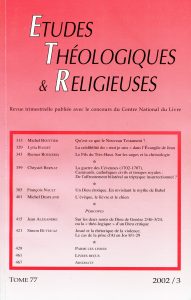L’historiographie de la guerre des Cévennes est durablement concentrée sur les seules manifestations camisardes du conflit, marginalisant ainsi de nombreuses autres composantes des troubles au profit d’une lecture strictement bilatérale des affrontements bas-languedociens, calquée sur le clivage confessionnel catholique/protestant. Or, tout en révélant les stigmates des guerres de Religion passées, Chrystel Bernat montre que la mobilisation polymorphe des anciens catholiques suggère de dépasser l’interprétation monocausale des troubles des Cévennes et de sortir du cadre trop rigide des alliances religieuses pour sonder le rôle plus ambigu des populations catholiques civiles, situé bien au-delà des marges connues de l’auxilariat des troupes royales ou du clergé dans lesquelles l’historiographie l’a souvent confiné, sans déduire des brigandages qu’elle lui reconnut l’aspect séditieux de certaines de ses franges. Regroupant catholiques zélés et éléments subversifs, la mobilisation des anciens catholiques laisse apparaître un troisième grand acteur du conflit trop longtemps relégué aux frontières du théâtre sacré.
For a long time, the historiography of the war of Cévennes had focuses solely on the actions of the Camisard thus leaving aside the numerous other elements of the war and therefore presenting it as a bilateral war in Bas-Languedoc thus closely following the distinction in religion between Catholics and Protestants. Yet while displaying at the same time the marks left by the previous religion wars, the polymorphous aspect of the monbilization of the original Catholics implies that we need to go beyond the vision of the war of Cévennes as a conflict only consisting in the actions led by the Camisards. Therfore, it is also necessary to go beyond the scope of religious alliances in order to study the more ambiguous role of civilian Catholic populations who cannot be considered as belonging only to the royal troups or clergy, a view which is too often held by historiographs. But if historiography had acknowledged that these civilian Catholic populations had engaged in robberies it had nevertheless failed to see the insurrectionary aspect of some of the fringe groups. Uniting together zealous Catholics and seditious elements the mobilization of original Catholics thus brings out the presence of a third major actor of the conflict which had stayed outside the sacred scene for too long.
p. 359-383
Auteur
BERNAT Chrystel
Chrystel BERNAT est maître de conférences en histoire du christianisme moderne à l'Institut protestant de théologie, Faculté de Montpellier, membre statutaire du Laboratoire d'études sur les monothéismes - UMR 8584, CNRS-EPHE.
